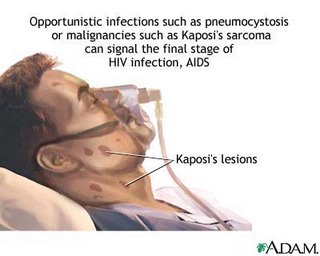(HealthDay News) -- Most Americans don't feel safer now than they did before 9/11, and their fears might be justified, a new report claims.
For example, seven states have not purchased antiviral medications in the event of a pandemic, 13 states don't have effective plans to distribute vaccines, antidotes and medical supplies in a public health emergency, and seven states and the District of Columbia don't have the ability to test for biological threats.
The report, compiled by the Trust for America's Health and released Tuesday, says that while many states have made progress in preparing for a potential public health disaster, much more needs to be done, and cuts in federal funding for state and local preparedness programs "threaten the nation's safety."
"Sept. 11, the anthrax attacks, Hurricane Katrina and the growing threat of a pandemic flu outbreak have all been wake-up calls to the country revealing gaps in our public health system's ability to respond to major crises," Jeffrey Levi, executive director of the trust, said during a midmorning teleconference.
Some important lessons have been learned from these events, Levi said. "Significant progress has been made in the nation's health emergency preparedness effort, but a number of areas still require serious attention."
That concern is heightened by the continual cuts in state, local and federal funding for preparedness, Levi added. "All Americans have the right to expect fundamental health protection during public health emergencies, no matter where they live," he said.
The report evaluates each state on 10 indicators of health emergency preparedness. Among the states, 35 plus Washington, D.C., scored eight or higher. Illinois, Kentucky, Nebraska, New Jersey, Pennsylvania, Tennessee and Virginia scored 10 out of 10, while Arkansas, Iowa, Mississippi, Nevada, Wisconsin and Wyoming scored the lowest, with six out of 10.
To remedy some of these problems, Levi's group is calling upon the federal government to increase public health and disaster preparedness funding. In addition, the U.S. Department of Health and Human Services should be expanding efforts to improve hospital surge capacity and community and hospital preparedness for public health emergencies, Levi said.
A public survey of more than 1,000 adults included in the report found that six years after 9/11, 54 percent of Americans believe the United States is not as safe as it was before 9/11, and two years after Hurricane Katrina, almost 60 percent of Americans do not think their community is prepared to respond to a natural disaster.
The survey also found that nine out of 10 Americans would accept a voluntary quarantine and stay home in the case of a pandemic flu. But of the 10 percent who would not adhere to a voluntary quarantine, 64 percent said they could not stay home because of lost income, and 39 percent feared losing their jobs altogether.
The report also evaluated progress by the U.S. government in preparing for bioterrorism, disasters and disease. The Pandemic and All-Hazards Preparedness Act of 2006, issuance of presidential directives, and the new Office of the Assistant Secretary for Preparedness and Response are all important steps, the report said.
However, challenges remain, including adequate funding for the Biomedical Advanced Research and Development Authority and increasing "transparency and accountability in all federally funded preparedness programs."
Other findings in the report include:
- Twenty-one states don't have laws that protect health-care volunteers from liability during emergencies.
- Twelve states don't have disease surveillance systems that work with the U.S. Centers for Disease Control and Prevention's National Electronic Disease Surveillance System.
- Another speaker focused on the lack of preparedness of U.S. hospitals to handle public health emergencies.
"To get hospitals up to speed in terms of their disaster responsibility would require an initial investment of $5 billion and about $1 billion a year to maintain that level of preparedness," Dr. Irwin Redlener, director of the National Center for Disaster Preparedness at Columbia University's Mailman School of Public Health in New York City, said during the teleconference.
The funding for hospitals, which started at $500 million dollars, has dropped to around $400 million. "It's a situation that's going in reverse," Redlener noted.
One expert thinks progress has been made, but much more is needed to maintain and improve emergency preparedness in the United States.
"The report readily captures the breadth and complexity of the many dimensions involved in emergency preparedness," said Dr. Howard Koh, director of the Harvard School of Public Health Center for Public Health Preparedness, and the former Commissioner of Public Health of Massachusetts.
Preparedness is not an endpoint but rather a process of continuous improvement, Koh said.
"By that measure, the country has made advances in planning and coordination, but there are still many areas in need of improvement. For example, the broad challenge of surge capacity, that is the need to mobilize additional staff, supplies and space in the event of an emergency, remains a major issue, especially when the health-care system is already severely stretched," he said.
Because disasters are uncommon events, there should be greater emphasis on rigorous drills and exercises that demonstrate effective coordination and mobilization of the many partners involved, Koh said.
In addition, public trust is essential, Koh said. "We need to sustain a long-term public health commitment to build an enduring system that will protect people and communities against all threats," he said.
More information
To see the full report, visit Trust for America's Health.
 (HealthDay News) -- A new HIV/AIDS vaccine designed to overcome the problem of preexisting immunity to common vaccine vectors is being tested in an early clinical trial at Brigham and Women's Hospital in Boston.
(HealthDay News) -- A new HIV/AIDS vaccine designed to overcome the problem of preexisting immunity to common vaccine vectors is being tested in an early clinical trial at Brigham and Women's Hospital in Boston.


